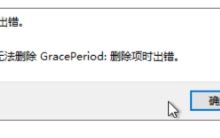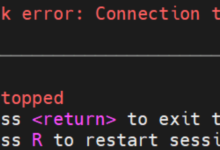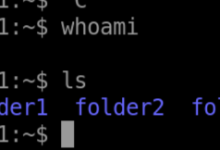在Perl中,HTTP::Server::Simple 模块提供了一种轻量级的方式来实现HTTP服务器。该模块简单易用,适合快速开发和测试HTTP服务。本文将详细介绍如何使用 HTTP::Server::Simple 模块创建和配置一个轻量级HTTP服务器。
安装 HTTP::Server::Simple
首先,需要确保安装了 HTTP::Server::Simple 模块。如果尚未安装,可以使用以下命令通过CPAN进行安装:
cpan HTTP::Server::Simple
或者,如果你使用的是 cpanm,可以通过以下命令安装:
cpanm HTTP::Server::Simple
创建简单的 HTTP 服务器
以下示例展示了如何创建一个最简单的HTTP服务器,该服务器在本地端口8080上运行,并返回一个简单的“Hello, World!”消息。
use strict;
use warnings;
use HTTP::Server::Simple::CGI;
# 创建一个简单的服务器类,继承自HTTP::Server::Simple::CGI
{
package MyWebServer;
use base qw(HTTP::Server::Simple::CGI);
sub handle_request {
my ($self, $cgi) = @_;
print "HTTP/1.0 200 OK\\r\\n";
print $cgi->header,
$cgi->start_html('Hello'),
$cgi->h1('Hello, World!'),
$cgi->end_html;
}
}
# 实例化并启动服务器
my $server = MyWebServer->new(8080);
print "Server is running on http://localhost:8080\\n";
$server->run();
以上代码创建了一个继承自 HTTP::Server::Simple::CGI 的简单服务器类 MyWebServer,并重写了 handle_request 方法来处理请求。
扩展服务器功能
可以通过扩展 handle_request 方法来增加服务器的功能。例如,解析请求路径并返回不同的内容:
use strict;
use warnings;
use HTTP::Server::Simple::CGI;
{
package MyWebServer;
use base qw(HTTP::Server::Simple::CGI);
sub handle_request {
my ($self, $cgi) = @_;
my $path = $cgi->path_info;
if ($path eq '/hello') {
print "HTTP/1.0 200 OK\\r\\n";
print $cgi->header,
$cgi->start_html('Hello'),
$cgi->h1('Hello, World!'),
$cgi->end_html;
} elsif ($path eq '/goodbye') {
print "HTTP/1.0 200 OK\\r\\n";
print $cgi->header,
$cgi->start_html('Goodbye'),
$cgi->h1('Goodbye, World!'),
$cgi->end_html;
} else {
print "HTTP/1.0 404 Not Found\\r\\n";
print $cgi->header,
$cgi->start_html('Not Found'),
$cgi->h1('404 – Not Found'),
$cgi->end_html;
}
}
}
my $server = MyWebServer->new(8080);
print "Server is running on http://localhost:8080\\n";
$server->run();
在这个示例中,服务器根据请求路径返回不同的内容。对于 /hello路径,返回“Hello, World!”消息;对于 /goodbye路径,返回“Goodbye, World!”消息;对于其他路径,返回404错误。
添加日志记录
为了便于调试和监控,可以添加日志记录功能,记录每个请求的信息:
use strict;
use warnings;
use HTTP::Server::Simple::CGI;
use POSIX qw(strftime);
{
package MyWebServer;
use base qw(HTTP::Server::Simple::CGI);
sub handle_request {
my ($self, $cgi) = @_;
my $path = $cgi->path_info;
# 记录请求信息
my $log_entry = strftime("[%Y-%m-%d %H:%M:%S]", localtime) . " – $path\\n";
open my $log, '>>', 'server.log' or die "Cannot open log file: $!";
print $log $log_entry;
close $log;
if ($path eq '/hello') {
print "HTTP/1.0 200 OK\\r\\n";
print $cgi->header,
$cgi->start_html('Hello'),
$cgi->h1('Hello, World!'),
$cgi->end_html;
} elsif ($path eq '/goodbye') {
print "HTTP/1.0 200 OK\\r\\n";
print $cgi->header,
$cgi->start_html('Goodbye'),
$cgi->h1('Goodbye, World!'),
$cgi->end_html;
} else {
print "HTTP/1.0 404 Not Found\\r\\n";
print $cgi->header,
$cgi->start_html('Not Found'),
$cgi->h1('404 – Not Found'),
$cgi->end_html;
}
}
}
my $server = MyWebServer->new(8080);
print "Server is running on http://localhost:8080\\n";
$server->run();
此代码段通过将每个请求的信息记录到 server.log 文件中,帮助开发者了解服务器的运行情况和请求历史。
 网硕互联帮助中心
网硕互联帮助中心








评论前必须登录!
注册